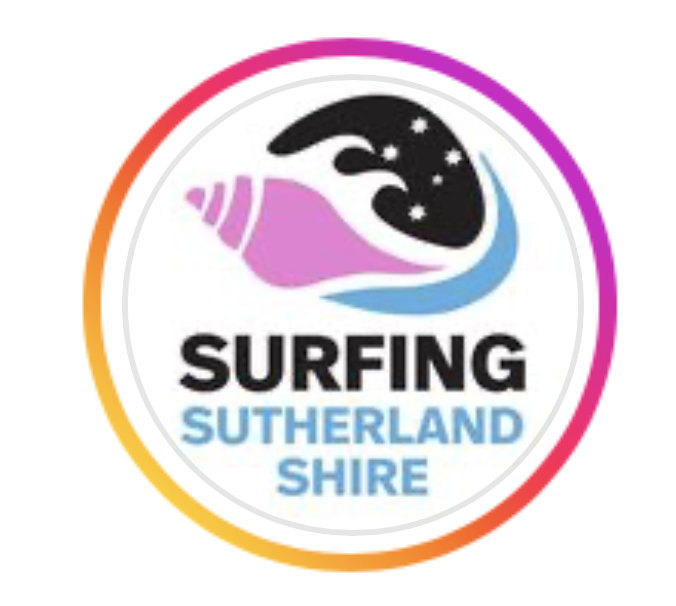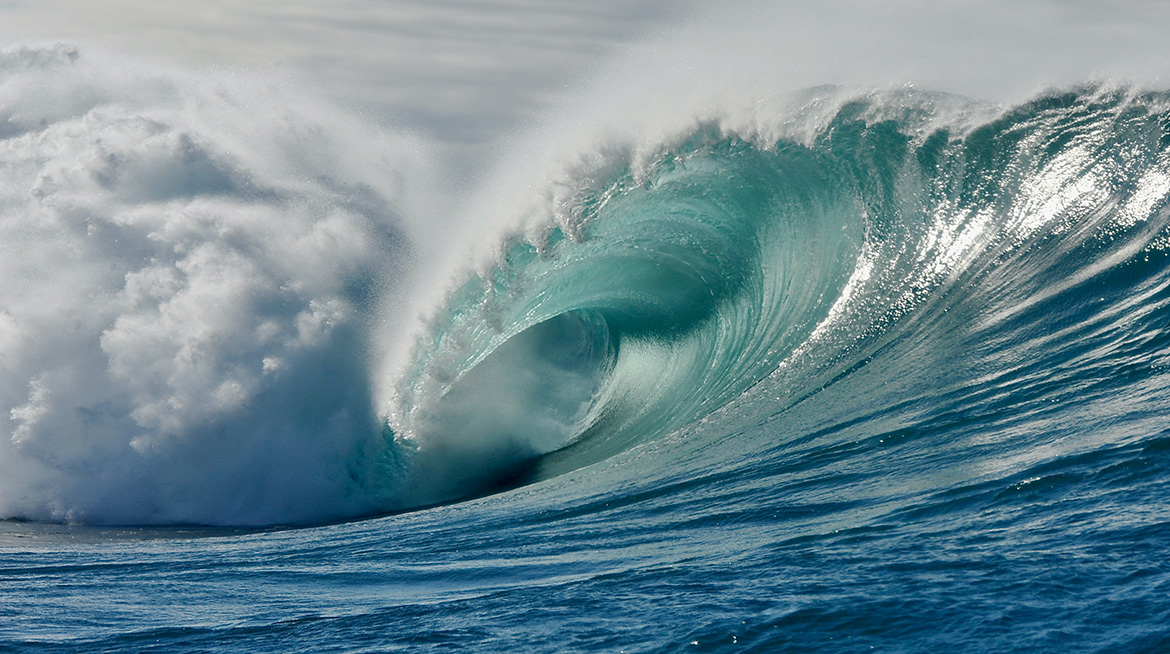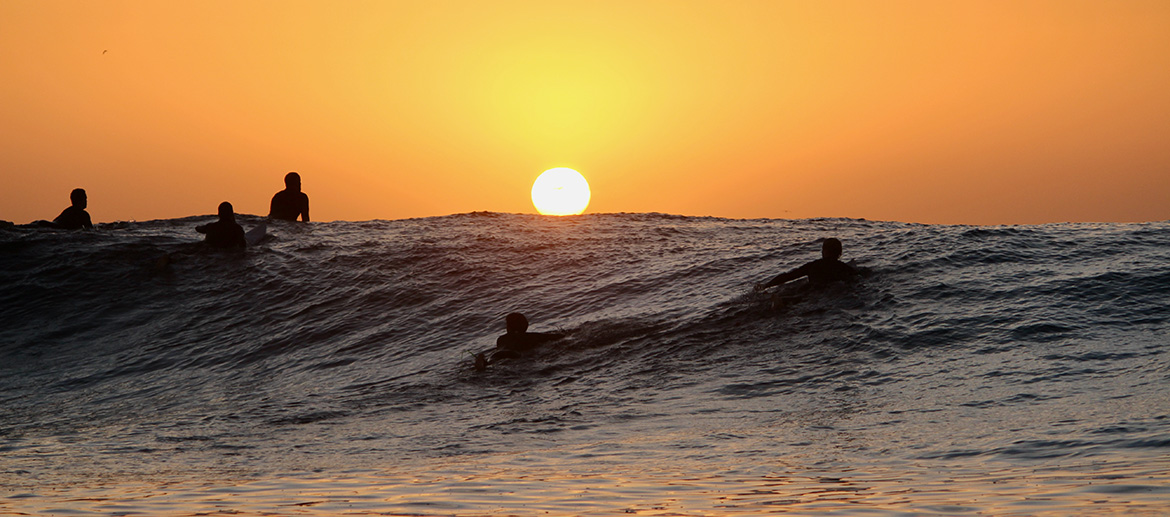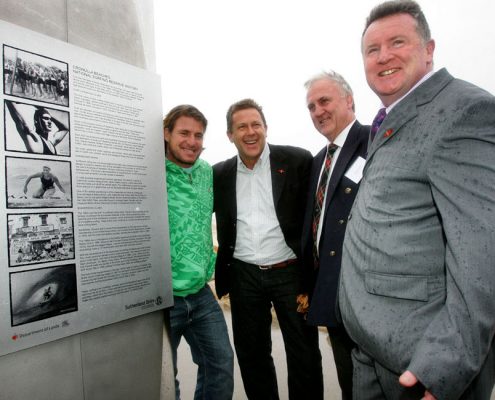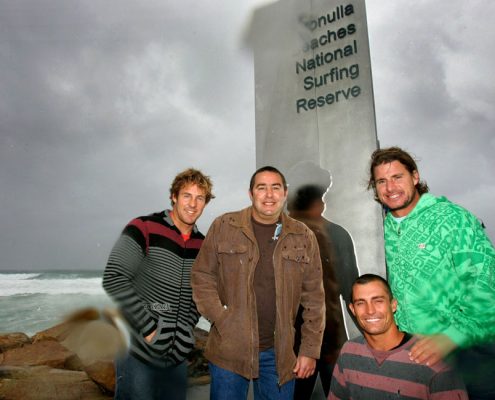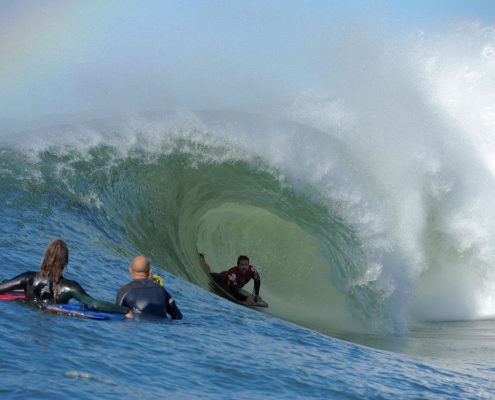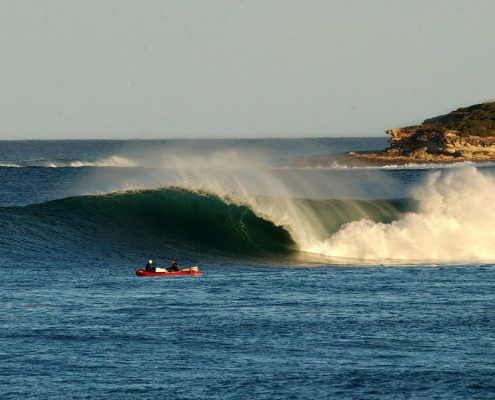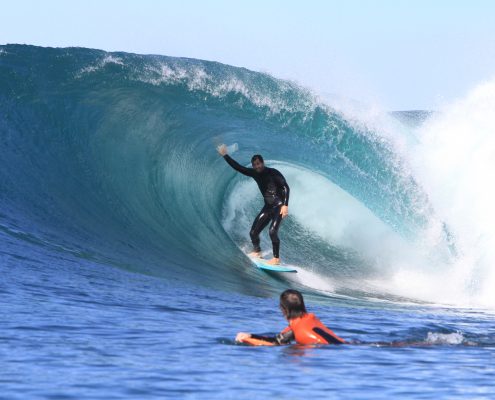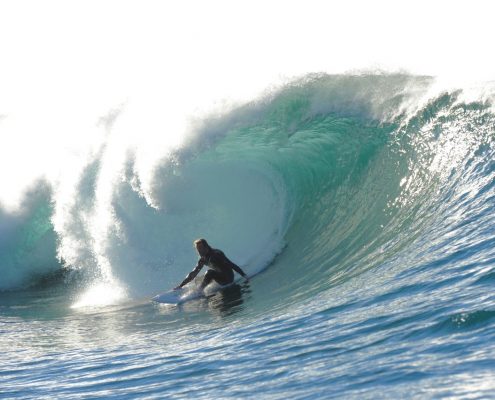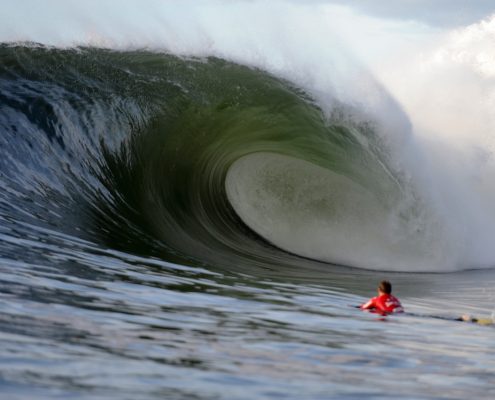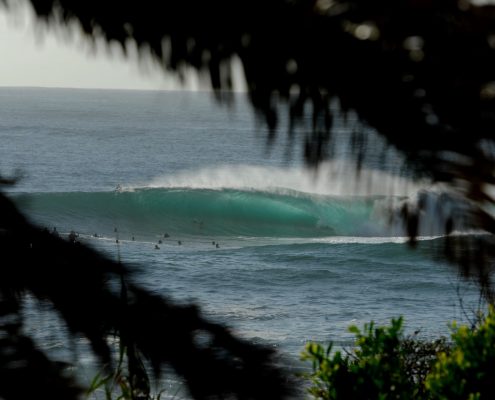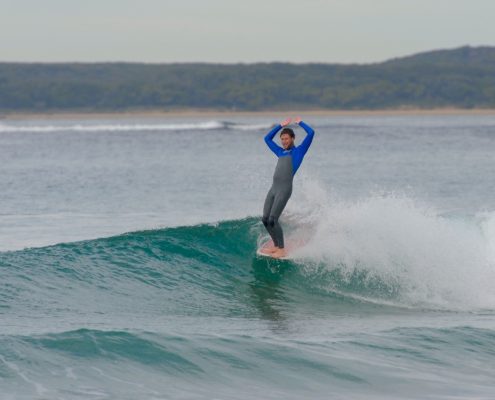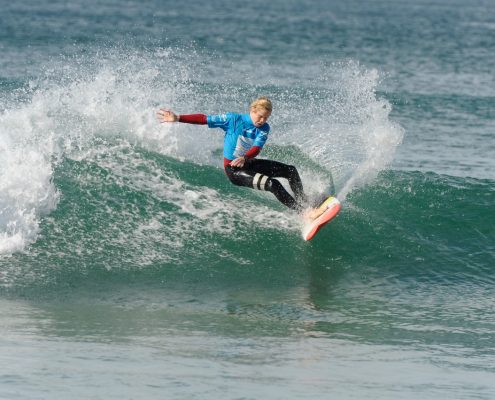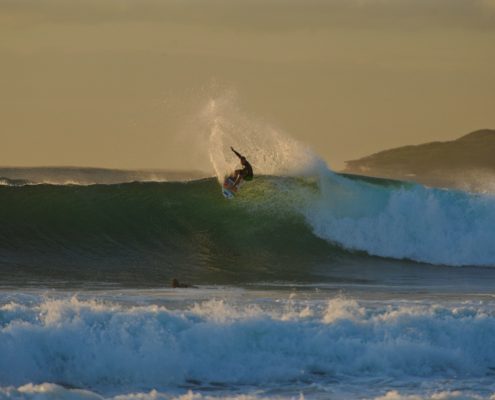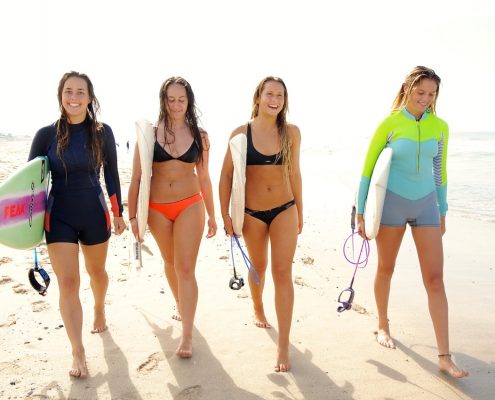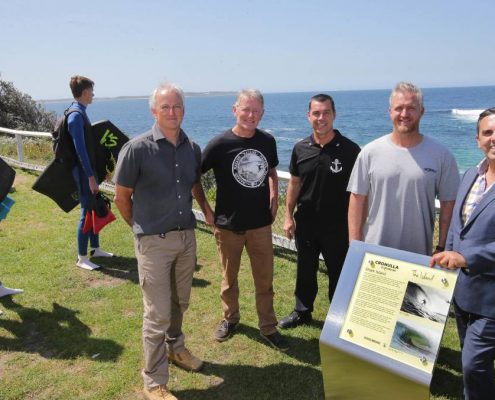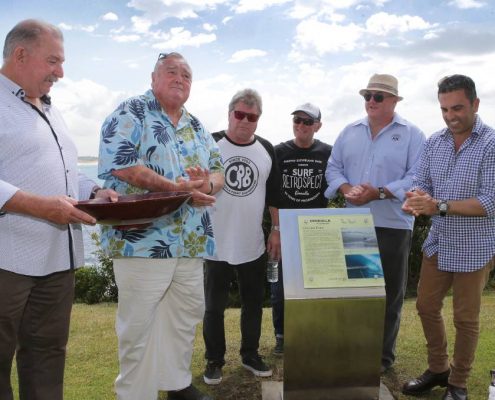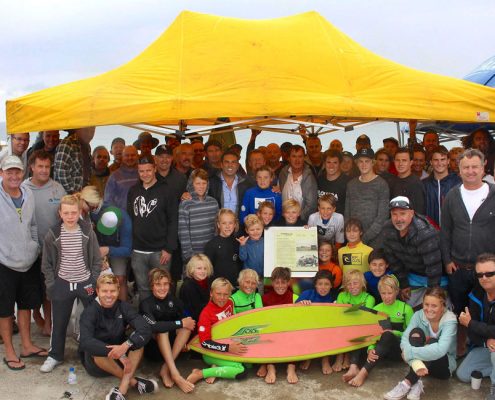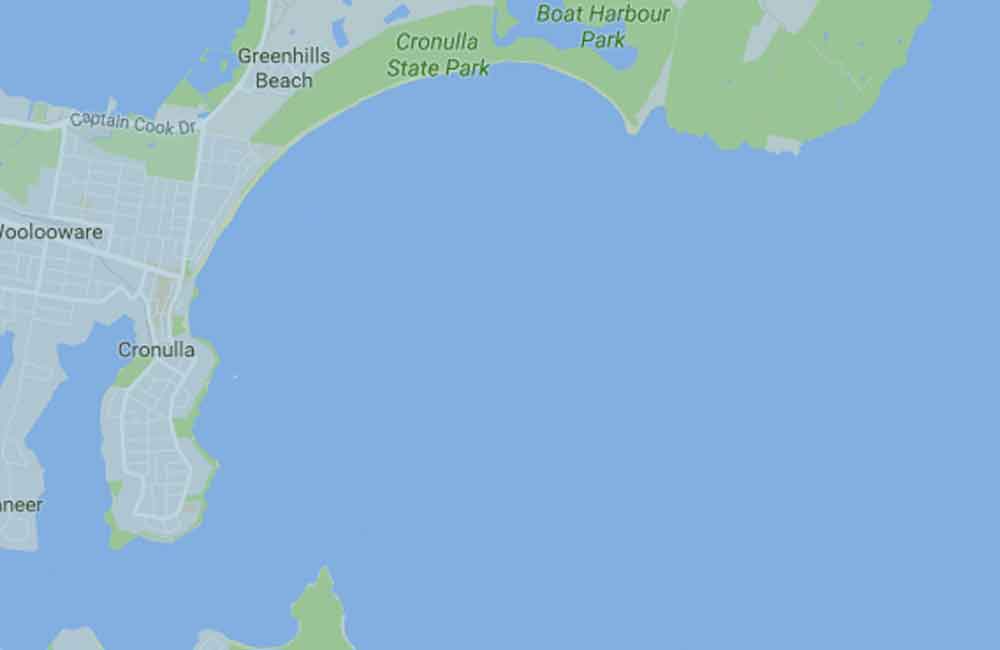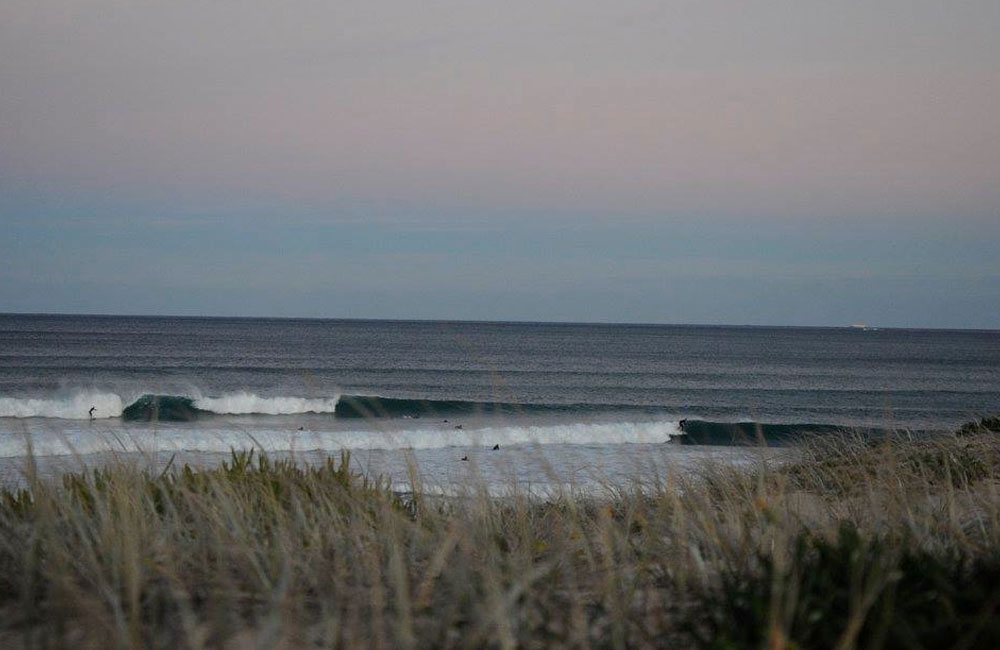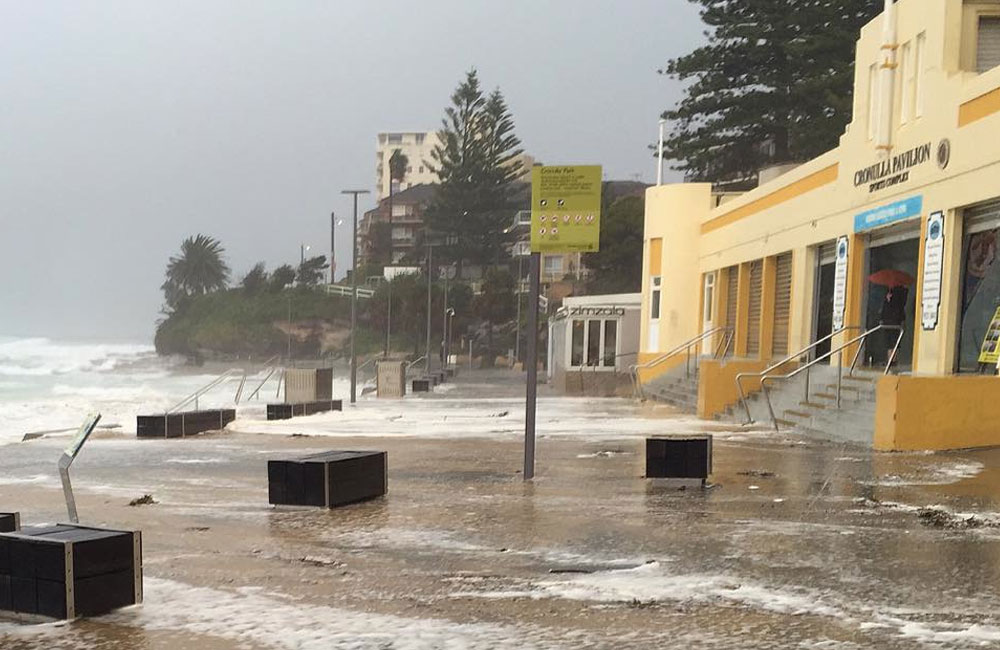The Cronulla Beaches NSR was declared in September 2008 and is one of southern Sydneys’ premier surf spots. Cronulla is home to former world champion surfers as well as other important figures in the development of Australian surfing and surf lifesaving. One of the largest NSR in Australia, the ‘Nulla’ is proudly preserved by a strong surfing community from an area better known as the ‘Shire’.
Cronulla has been a tourist destination for more than 100 years with its beach as the main attraction even in the 1880s. Although there are no reports of surfing at Cronulla until early in the 20th century, by 1904 the popular seaside village had become known as ‘the Many of the southern side of Sydney’.
The new craze of body surfing helped grow Cronulla’s reputation as a seaside resort and before long everyone seemed to be having fun at the beach. Invevitably, people drowned in the surf and, after one such death at Cronulla in 1908, Cronulla Surf Life Saving Club was formed. Other clubs followed at North Cronulla in 1925, Wanda in 1946, Elouera in 1967.
Surfboard riding, however, was not encouraged because of the danger it posed to bathers, but all that changed in the summer of 1914/15 with the visit to Australia of Hawaiian Olympic swimming champion, Duke Kahanamoko. The Duke’s demonstrations of boardriding at Cronulla, Freshwater and Manly created a sensation, especially his exhibition at North Cronulla when big swell was running. The St George Call described how he made surfing look ‘ridiculously easy by standing on his head, diving off and twisting the board’.
In 1956, Australia experienced another invasion, this time by a group of Californian surfers riding shorter, lighter Malibu boards, which were more manoeuvrable and could be carried easily. The Californians surfed at Cronulla Point and put on a great show, just as the Duke had done 40 years earlier. One of the earliest practitioners of the new inside – the-curl style of surfing was Cronulla legend Bobby Brown. Brown made the final of the 1964 NSW titles, and after Brown’s untimely death Farrelly competed in, and won, the inaugural Bobby Brown Memorial Contest at Sandshoes Reef in 1968. A new generation of surfers and surfing lifestyle was born that year, bringing to a close the era of Malibu board, Surferplanes and Paipo boards. Manufacturers, such as Graham Ferris and Brian Jackson, who celebrated 50 years in the board business in 2007, were instrumental in the development of a local surfboard industry.
